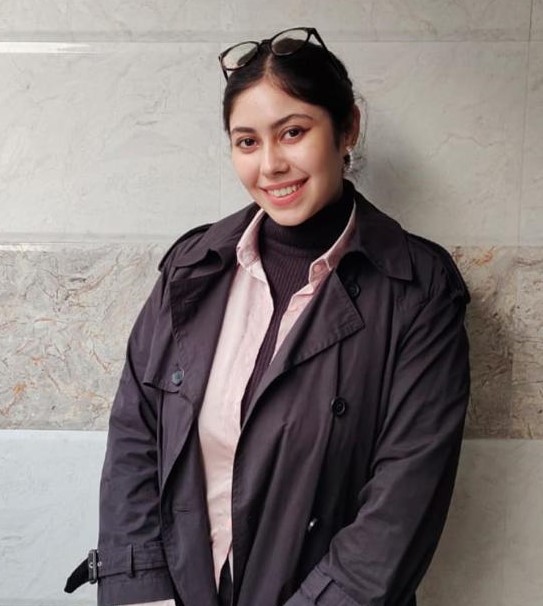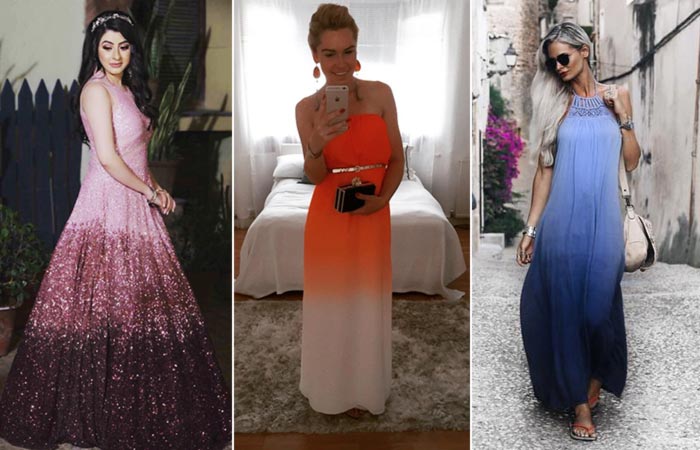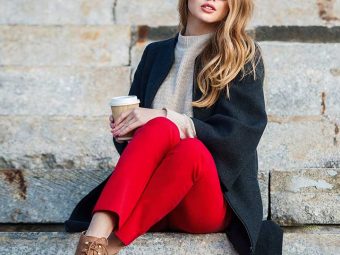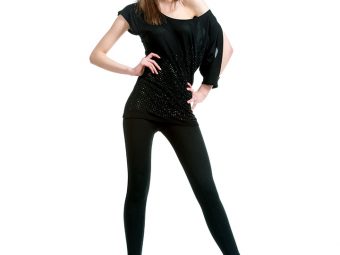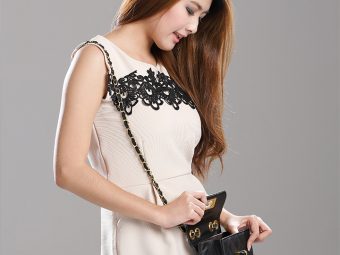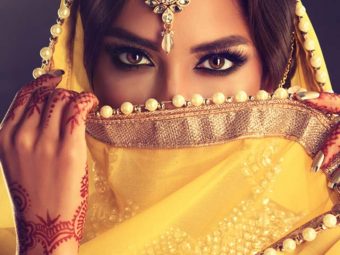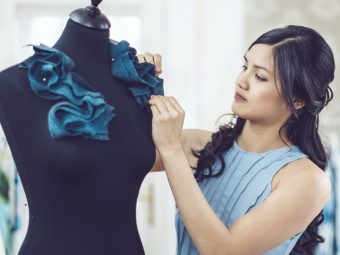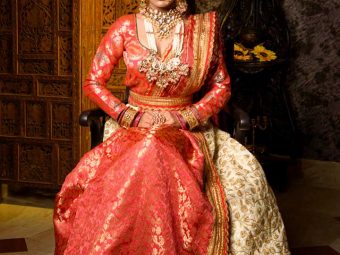How To Mix And Match Colors In Your Clothes – The Ultimate Color Wheel Guide
Wondering how you can pair up your clothes? Make your life easy with these ideas.
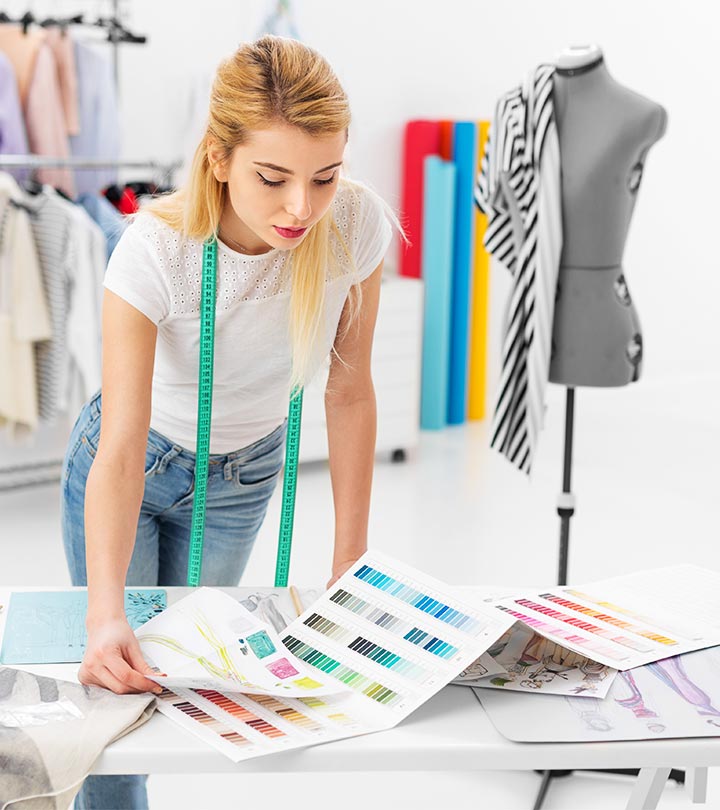
Image: Shutterstock
If you want to understand the fashion color wheel, then, you, my friend, are definitely in the right place because we are here to help. Today, in this article, we are going to show you how to marry the colors well so that they can suit you perfectly and create a color contrast without upsetting the color balance. It is important to have a better understanding of how colors work because you can either make or break your look as a result of the colors you choose for your outfits. If the colors are not well put together, your look will not come out the way you want, no matter how expensive your attire is. But do not worry because, once you give this article a read, you will be acquainted with the ultimate color wheel theory to ace your fashion game.All you need to do is, scroll down and check what we have in store for you. So go ahead!
 Ace The Look
Ace The Look- Split Complementary Colors: Here you pick either of the immediate shades beside the complementary color. For example, pair orange earrings with a deep blue or purple blouse. For a subtler look, add a saffron scarf to an earthy purple tee or thistle purple sweater.
- Contrasting Colors: Wear contrasting colors like red and green, blue and orange, purple and yellow, or white and black. Ensure one color dominates (70%), while the other acts as an accent shade (30%) to balance your look.
- Accessorize: Match your handbag to your shoes or clothes. For warm colors like yellow and orange, choose gold jewelry. Opt for silver or platinum jewelry for cool shades like blue and purple.
- Neutral Denim: Treat denim pieces as neutrals, and pair shades of denim that are similar but not too matchy together, like mid-wash jeans with a light-wash denim shirt.
In This Article
How To Know What Colors To Match?
Using the right colors and matching them perfectly can be a deal maker. Choosing the perfect color palette for an outfit is what sets you apart. And, that’s why color and its theories continue to be the pivot for not just clothes, but everything else like interiors, hair, makeup, and much more. To make the colors work for you, it is essential to understand the color harmony theory and color psychology.
To explain this further, let’s first understand the basis of this whole color wheel theory.
The Color Wheel:
The color wheel was first invented by Sir Isaac Newton in the 18th century when he tried to condense the color spectrum into a wheel and visually represent the relationship between them. The wheel has been segregated into the following categories. While we will focus on using a color wheel for clothes and outfits, this theory is universal and applies to just about anything that deals with colors.
- Primary Colors
These comprise red, yellow, and blue. No two colors can be mixed to achieve these shades. Everything else is derived from these colors.
- Secondary Colors
Secondary colors are a combination of the primary colors. So, red+yellow = orange, red +blue = purple, and blue+yellow = green.
- Tertiary Colors
These colors are a combination of primary and secondary colors. By mixing these colors, you get shades like mint, aqua colors, corals, etc.
- Warm And Cool Colors
Hues of colors like red, orange, yellow, brown, etc. are warm colors – they make things look smaller in size, and that’s why most of us prefer wearing warmer colors when we want to look slimmer. Cool colors, like hues of blue, purple, green, etc., are soothing colors.
- Neutral Colors
Neutral colors are self-explanatory. They are just muted, plain, and subdued. Black, grey, whites, off-whites, taupe, etc., fall into the neutral category.
 Did You Know?
Did You Know?What Are The Principles For Matching Colors?
One fundamental principle for matching your clothes, or for that matter anything, is combining colors that work in harmony. And, that’s what we need to remember while designing or putting our outfits together.
Here’s how you can match them.
- Complementary
Red and green, violet and yellow, blue and orange – complementary colors, as the name goes, work best when put together. These are exactly opposite to each other on the color wheel. They might seem bold to look at, but the outputs will be perfect. If you observe carefully, your spring and summer clothing is mostly designed using complementary colors. While some might argue against this concept, it is actually a matter of choice as some like making bold statements.
 Quick Tip
Quick Tip- Analogous
Matching two or three continuous shades on the color wheel that blend well with each other is called analogous color matching. When you put an entire outfit together based on this, it looks both striking and stylish. If you are wondering how to style that orange or camel trench coat of yours, pick a shade on either side of the color in the color wheel and work with that.
- Triadic
The combination of colors that are equidistant from each other on the color wheel is called ‘triadic.’ They look great together, but some might argue that they can be OTT. However, you can choose the muted shades of these colors to make your outfit. A pair of green cargos with a pastel pink top and powder blue accessories or shoes will look sophisticated and tasteful.
Perfect Colour Combination For Dresses:
- Keeping It In the Family
2) Not found
@camilagosbelmar
Keeping it in the family is a mantra you need to remember. The safest way to do this is by blending different shades of the same color. However, this type of chromatic dressing will inevitably get monotonous and boring very soon. Remember how we discussed complementary colors? (Red and green, violet and yellow, blue and orange.) Play around with a combination of these colors; they will look great when put together.
- The Ombre Test
Ombre is taking over everything from hairstyles and cakes to nail art and decor, and not to forget, outfits. Party-wear outfits, bridesmaid dresses or just simple jeans and tops in ombre can turn heads. Diminishing shades of the same color either in ascending or descending order works great. If you are sporting separates, you need to bring it all together with the top, bottom, shoes, and accessories being in sync. Wear ombre outfits for your Christmas or winter parties, goes perfectly with the theme, and the weather too.
- Monochrome Look
It seems like a no-brainer because it’s just one color in the same shade for the entire outfit. However, this color coordination is the hardest to pull off, for obvious reasons. The good news is monochromatic looks have caught up and are not considered weird anymore. Start with comfortable and neutral colors like grays, blues, whites, and blacks, then progress to pastel undertones. Monochrome looks can be customized depending on the season or occasion. If it’s a formal set up, stick to neutrals, blues or whites, otherwise explore the pastels, yellows or even brighter shades if you please.
- One Thing At A Time
If it’s a printed or patterned outfit, let the print take over. Prints and patterns are usually a combination of one or more colors, so you must leave it at that. Keep the accessories in the neighborhood; more colors only makes it clumsier and unruly.
- The Balancing Act
Another trick of the trade is to balance out any colors you choose to mix carefully. Anything done proportionately is a foolproof way of coordinating your outfit. Like they say, too much of anything is good for nothing.
An enthusiastic fashion blogger known for her insights into clothing and style expresses her admiration for different colors, styles, and prints. When talking about color combinations, she says. “I love the way the two dark colors come together and give me one long line. And I love the warm richness of this combination. Brown and black are both classic neutrals which means that they go with everything, including each other (i).”
- Match It With Your Skin Tone
If you are pale or yellow-toned, go for the warmer side of the palette. You can pull off brighter or warmer shades of brown, coral, honey, gold, amber, taupe, etc., as they look amazing on this skin tone.. If you have cooler undertones choose cool shades like grey, navy blue, varying shades of green, aqua, emerald, burgundy, etc., as they can be the perfect color combination for your dress that suits your tone. The same applies to your eye makeup too.
- When In Doubt – Err On The Neutral Side
Some people prefer being muted and subdued with their choice of colors, opting for just neutral shades. This is a great color combination for a dress, especially for formal occasions. If this is you and you do not want to change drastically, go with one cool or warm color, and leave everything else neutral. It’s always best to keep it this way!
Infographic: The Ultimate Color Wheel Guide For Your Clothes
Some people have a natural knack for pairing the right colored clothes together. But if you are the opposite, we have something for you. There are three simple rules to follow when choosing colors for your clothes. Follow them and you will always look like the queen you truly are.
Check out the below infographic to find the ultimate color wheel guide for your clothes. Illustration: StyleCraze Design Team
Save the high-quality PDF version on your device now.
Download Infographic
Dressing up is not just about throwing random pieces of clothing onto the body. It indeed is an art and requires thoughtful efforts. Certainly, the fashion color wheel has opened the eyes of many and made them see the significance of colors and their combination in clothes. It is important to know how to mix and match colors for your outfits to bring out your personality better. Personal stylist Paola Farina says, “When in doubt, find a professional for a color analysis. One way to find out which colors suit to better is to look at your veins. Green veins equal a warm undertone and blue veins equal a cool undertone. Furthermore, if coral lipstick shades suit you better, you have a warm skin undertone, and if strawberry shades look good on you, your skin has a cool undertone. So, go for similar colors.”
Refer to the steps above to know the best color combinations for dresses that suit females. As a wearer, you must be able to feel comfortable in the colors of your clothes and let them speak about you.
Frequently Asked Questions
What is the relationship between the fashion color wheel and color theory?
The fashion color wheel is based on color theory and provides a visual representation of how colors relate to one another. It is useful in fashion design for choosing color combinations for clothes that complement each other.
How does the fashion color wheel differ from the traditional color wheel?
The fashion color wheel typically includes more colors than the traditional color wheel and takes into account the current trending colors in fashion. It also may have different groupings of colors, like seasonal color harmonies, specific to fashion design.
What is the difference between a fashion color wheel and a regular color wheel?
The regular color wheel focuses on basic color relationships and is used mainly in art and design, while the fashion color wheel is specifically tailored to the needs of fashion design, includes more colors, and considers current fashion color trends.
Key Takeaways
- To create a split-complementary color scheme, pick a color and pair it with the colors next to its complementary color.
- Analogous color matching involves combining two or three continuous shades on the color wheel for a striking and stylish look.
- Triadic color matching or color blocking refers to the combination of colors that are equidistant from each other on the color wheel.
- It is best to blend different shades of the same color.
- To look your best, select colors that complement your skin undertone.
Do you want to learn how to read the color wheel and enhance your look? Watch this video to create stylish and satisfying outfits, using simple color wheel tips.
Personal Experience: Source
i. Color Combinations
https://truetzniutistruebeauty.wordpress.com/2022/09/01/color-combinations/

